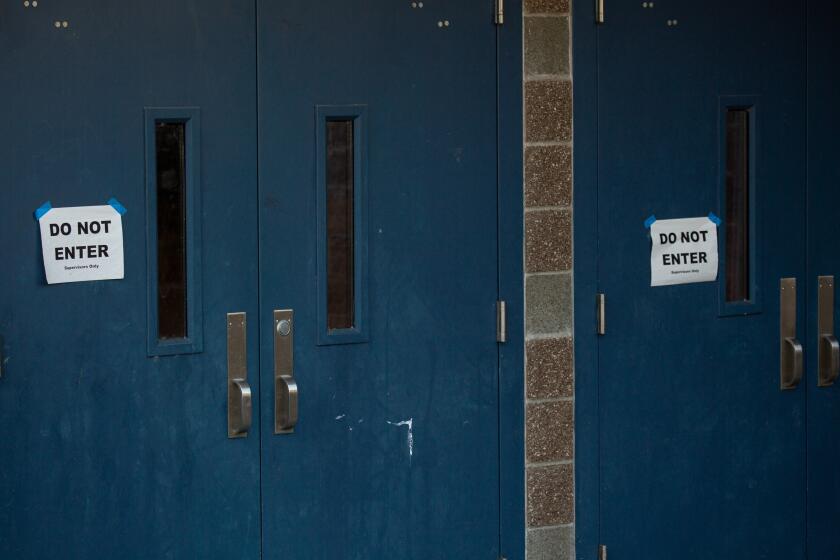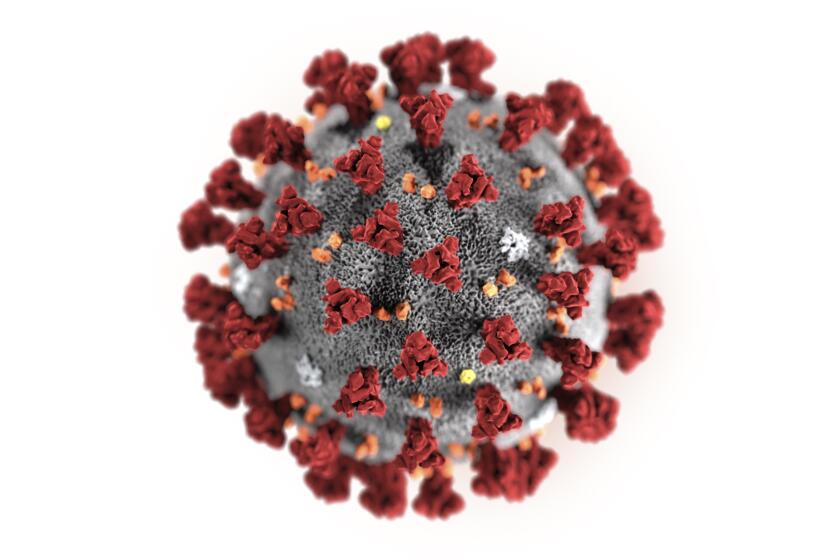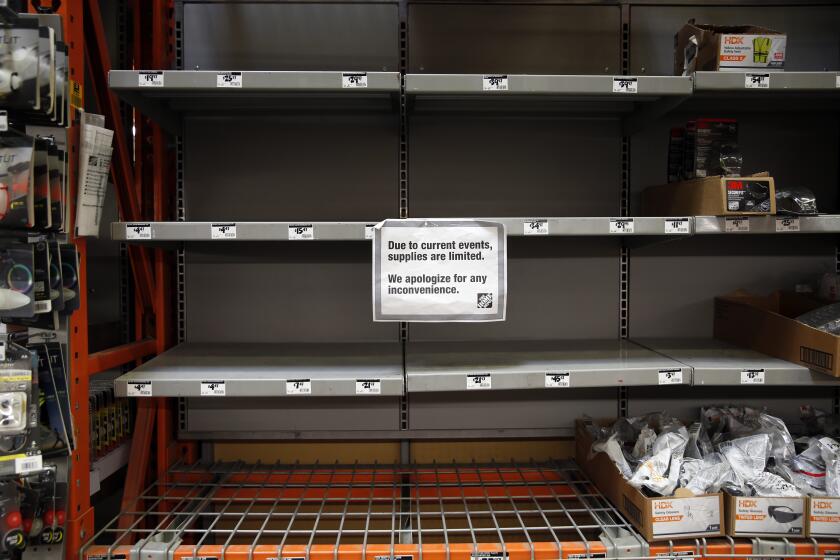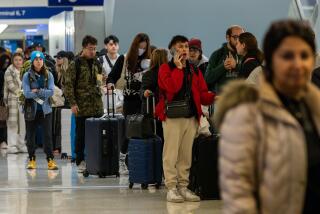California sees third case of ‘community spread’ coronavirus as first U.S. death is reported near Seattle
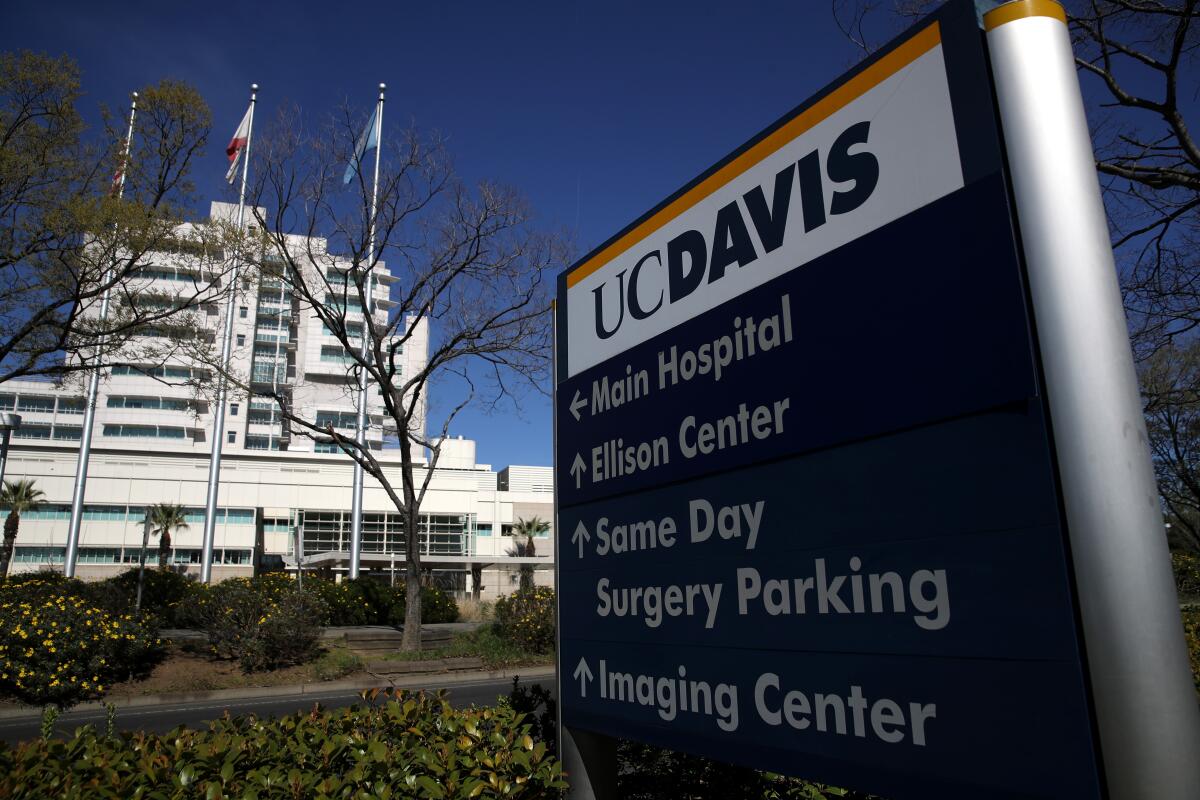
A Washington state man has become the first person in the U.S. to die from the coronavirus, state and federal public health officials confirmed Saturday. He was not one of the two coronavirus patients the state had previously announced.
Public health officials in California on Saturday announced another coronavirus patient, a woman described as “a household contact” of a Santa Clara County woman whose diagnosis was made public Friday. There are at least 30 coronavirus patients in California, many of them from repatriation flights, with the number changing often.
The King County patient who died was in his 50s and had underlying health conditions, and he is believed to have contracted the virus from “community spread,” not travel, officials said. He died at EvergreenHealth Medical Center in the Seattle suburb of Kirkland.
“It is a sad day in our state as we learn that a Washingtonian has died from COVID-19,” Gov. Jay Inslee said in a statement. “Our hearts go out to his family and friends. We will continue to work toward a day where no one dies from this virus.”
Washington officials also announced two new coronavirus patients associated with a skilled nursing facility in the same community, Life Care Center of Kirkland. One of the patients is a woman in her 70s who lives at the facility; she was in serious condition at EvergreenHealth Medical Center. The other is a woman in her 40s who works at the facility and is in satisfactory condition at Overlake Medical Center in Bellevue.
A person infected with the novel coronavirus has died, the first reported death of COVID-19 in the U.S., Washington state health officials said Saturday. Three others were being treated Saturday and a CDC team was heading to Seattle as Washington’s governor declared a state of emergency.
About 27 of the 108 residents at the facility and 25 of the 180 staffers have symptoms of the virus, Dr. Jeffrey Duchin, health officer for Public Health Seattle and King County, said Saturday in a telebriefing with the Centers for Disease Control and Prevention.
“We are very concerned about an outbreak in a setting where there are many older people,” he said.
A CDC team was slated to arrive Saturday night to help assess all of the possible patients.
Residents will remain at the facility unless they need hospitalization, Duchin said, but will be segregated according to symptoms. “No mixing people who are sick with people who are not sick,” he said.
Officials have so far found no link between the man who died and the nursing facility, but they are continuing to investigate, Duchin said.
The governor declared a state of emergency to respond to the outbreak.
The new coronavirus spreading rapidly around the globe can be deadly because it targets a very vulnerable and essential part of the body — the lungs.
“Our priority now is to slow the spread of this virus,” Inslee said. “Our healthcare professionals say the easiest way to do that is to practice good hygiene — wash your hands often, sanitize frequently touched surfaces and stay home when you’re sick. Preventing future cases will require the work of all of us.”
Speaking at a news conference Saturday, President Trump described the man who died as “a medically high-risk patient.” He emphasized that “there is no reason to panic” and that the risk to the general public remains low.
At the same time, he announced new restrictions on travelers from Iran as well as additional screenings of people coming from Italy and South Korea, where there has been a jump in infections. He discouraged people from traveling to those countries.
Dr. Anthony Fauci, the director of the National Institute of Allergies and Infectious Diseases, appeared alongside Trump and said it was important for people to limit travel to the most affected countries. He sought to reassure the public that the government is marshaling all available resources to combat the spread of the virus in the U.S.
“The country as a whole still remains at low risk, but this is an evolving situation,” Fauci said. “There will be additional cases, but we should not be surprised by that. The challenge is how we deal with it.”
The newest diagnoses bring the total number of U.S. coronavirus cases to 70, with 47 of them among travelers who were either evacuated from the Diamond Princess cruise ship off Japan or on government-chartered flights from Wuhan, China, the epicenter of the outbreak.
With new coronavirus cases reported in California, Washington and Oregon, officials are trying to accelerate testing to stem what experts and officials believe is an inevitable spread of the virus into communities.
Stores across Southern California are reporting a surge in demand for healthcare supplies, shelf-stable food, and other supplies.
“We are still early in the investigations in California, Oregon and Washington; however, this preliminary information raises our level of concern about the immediate threat of COVID-19 for certain communities in the United States,” Dr. Nancy Messonnier, director of the National Center for Immunization and Respiratory Diseases at the CDC, said Saturday.
Still, officials say that most people who contract COVID-19 experience only mild illness and that the virus is usually severe only in people who are older or have underlying health problems, such as cardiac or respiratory conditions or diabetes.
The California Department of Public Health has announced eight testing labs that can handle coronavirus cases, in Los Angeles, Orange, Ventura, San Diego, Contra Costa, Alameda, Santa Clara and Tulare counties. Officials also announced the arrival of 1,200 testing kits from the federal government.
“The availability to test at California’s public health laboratories is a significant step forward in our ability to respond rapidly to this evolving situation,” Dr. Sonia Angell, director of the California Department of Public Health and state health officer, said in a statement. “As we face the likelihood of community transmission here in California, having this resource where we need it is essential to better inform public health response and protect our communities.”
The Food and Drug Administration also announced new policies aimed at helping hospitals speed up testing of potential virus patients. The move comes amid complaints about the slow pace of processing tests.
In Seattle, Duchin said public health officials learned that the man who died had been diagnosed with the coronavirus after he was reported as a presumptive positive by Washington’s Public Health Laboratories. The laboratories only recently acquired coronavirus test kits, and the man did not become eligible for testing until the CDC updated its guidelines to include those who had no recent history of overseas travel or exposure to another coronavirus patient, he said.
“If we had the ability to test earlier,” Duchin said, “I’m sure we would have identified patients earlier in the community.”e
The U.S. is banning travel to Iran in response to the outbreak of the new coronavirus and is considering closing the border with Mexico.
Dr. Frank Riedo, EvergreenHealth medical director of infection control, said that the diagnosis of the man who died there occurred after the CDC changed its guidelines Tuesday. On Thursday, he said, “we opted to look at our most critically ill patients.”
The man had contracted the illness before being admitted to the hospital with serious respiratory symptoms, he said.
Riedo says it’s likely that there are more coronavirus cases in the Seattle area. “What we’re seeing is the tip of the iceberg,” he said. “In all likelihood, there is ongoing low-level transmission.”
California now has three coronavirus patients, all women, who did not recently travel outside the U.S. or come in contact with someone who did. That raised concerns that the virus was spreading in communities and prompted health officials to find and quarantine anyone who came in contact with them.
The patient announced Saturday, who officials said was not ill and was isolated at home, is “a household contact” of a Santa Clara County woman with chronic health conditions whose physicians requested coronavirus testing after she was hospitalized for a respiratory illness.
Officials said more California cases were inevitable.
“Definitely we will have more cases here,” Dr. Peter Beilenson, Sacramento County’s director of health services, said. “You shed virus before you are symptomatic, so it’s already out of the bag in a lot of ways. It’s going to spread, it’s just going to spread.”
The ongoing efforts in Northern California had already led to the voluntary quarantining of dozens of people, including students at UC Davis and other college campuses, and workers at the two hospitals where the country’s first patient without any known links to foreign travel was treated.
The patient, a Solano County woman, was hospitalized for three days at NorthBay VacaValley Hospital in Vacaville before being moved to UC Davis Medical Center in Sacramento. She was not tested for several days because she did not fit CDC screening criteria at the time.
This time gap concerns officials because it could have allowed her to infect others she came in contact with.
To identify such individuals at the hospital, NorthBay officials reviewed the woman’s medical records and three days of security camera footage to identify all the clinicians, visitors and hospital workers who entered her room.
Sacramento County health officials said dozens of people might be quarantined at home as a result. UC Davis Health spokesman Steve Telliano disputed reports that the number could be higher than 70 but refused to say whether more or fewer people were quarantined.
Steve Huddleston, vice president of public affairs of NorthBay Healthcare, said that the hospital has a staff of about 200 and that the quarantine affected dozens of people connected to the hospital. Other employees are filling in for co-workers who have been sent home, he said.
Three UC Davis students were under 14-day isolation as one awaited test results after showing mild coronavirus symptoms, officials said on Thursday. On Saturday, it was determined that the student did not have the virus.
Two students at Palo Alto Unified School District, which is in Santa Clara County, were sent home after officials learned that one of their parents might have been exposed to the coronavirus, the school district announced Friday. One is a student at Palo Alto High School; the other attends Jane Lathrop Stanford Middle School, officials said.
In Oregon, an employee of a Washington County elementary school was diagnosed with the coronavirus Friday after first experiencing symptoms Feb. 19 and could have exposed others at the school, officials said.
In Washington, in addition to the patient who died, a Snohomish County high school student tested positive after seeking care at Seattle Children’s North Clinic on Monday, officials said. Officials also announced that another King County woman in her 50s who had traveled to South Korea had contracted the virus.
Neither the Oregon patient nor the Washington high school student had a recent history of international travel or contact with another coronavirus patient, officials said.
They and the Santa Clara County women tested positive for the virus in laboratories in their respective states. They are considered presumptive positive cases until the results are confirmed by CDC testing.
“We are facing a historic public health challenge,” Messonnier said. “We will continue to respond to COVID-19 in an aggressive way to contain and blunt the threat of this virus. While we still hope for the best, we continue to prepare for this virus to become widespread in the United States.”
Wigglesworth, Shalby and Chabria reported from Los Angeles. Read reported from Seattle.
More to Read
Sign up for Essential California
The most important California stories and recommendations in your inbox every morning.
You may occasionally receive promotional content from the Los Angeles Times.
